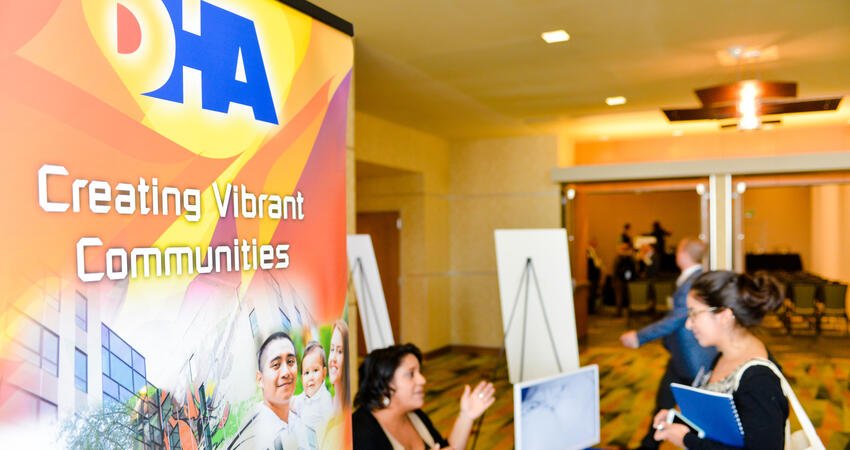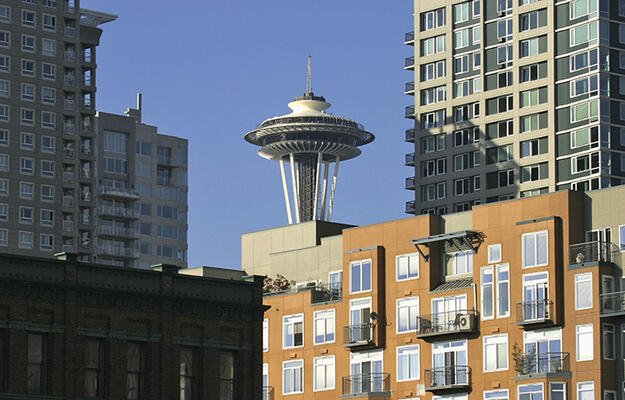
Q&A with Ismael Guerrero on Active Design
The Denver Housing Authority (DHA) has developed a new strategic vision in which every individual or family shall have high-quality, affordable housing in communities that offer empowerment, economic opportunity and a vibrant living environment. In a mission statement published recently, DHA set out guiding principles for this vision, including:
- Promoting collaborative partnerships and teamwork
- Managing assets responsibly
- Expanding housing opportunities for all
- Having fiscally responsible operations
- Empowering residents
- Maximizing opportunities for disadvantaged residents, businesses and communities.
How Housing Matters recently spoke with Denver Housing Authority’s Executive Director Ismael Guerrero about current projects in the city that have been planned with those goals in mind.
How Housing Matters: With respect to housing innovations that Denver has initiated to help improve community health, what are some changes the city has put in place that you think other cities and communities can replicate?
Ismael Guerrero: One example is definitely our active living design guidelines. When a company is developing a new property or even planning a community, there are now a series of best practices around designing for an active and healthy lifestyle—from considering walking paths and lighting within the building to making sure there are spaces for bikes and areas for kids to play outside. Incorporating active living design guidelines is one thing that we’ve really learned and are much more intentional about so that making the healthy choice is the easy choice in a community.
HHM: What is a strong example of a development where active living design guidelines are firmly in the mix?
Guerrero: Mariposa, formerly a public housing project known as South Lincoln Homes, is owned and managed by the Denver Housing Authority and has 270 public housing units on 15.1 acres in the La Alma/Lincoln Park neighborhood of Denver. DHA’s redevelopment plan calls for a mix of housing products, a range of income levels and sustainable and innovative design features near transit to serve a broad resident base. Phase-one, Tapiz Apartments, a 100-unit LEED-Platinum building was completed in 2012. Overall, the Mariposa project has six phases and is slated for completion in 2016.
At the Mariposa property, one of the key design features is a large, well-lit and attractive central stairwell and we’ve put the elevators back in the corner so that the easiest and most obvious choice is to walk up the stairs to your unit rather than use the elevators.
That’s an example of an active living design feature that anybody can incorporate to get people to be more pedestrian-minded and active. Too often the default design has the elevator doors right in the lobby and the stairs at the corners because they’re just considered fire escapes and not really part of the living environment. We’re trying to reverse that concept.
HHM: What other design features promote active living?
Guerrero: Most of our units include extra large closets called Colorado closets where you can fit a bike, cross country skis, your backpack or some workout equipment—basically the things that you might bring to work out during your fitness routine. It gives people a larger storage unit that’s convenient and planned so they don’t feel like they to carry their bikes up and chain them out on the balcony or stand them up in the living room. It builds fitness into the design.
Because we’re catering to a mixed-income community, our units have to be attractive to the marketplace. These design features give us an edge because even some market-rate developers aren’t thinking about these kinds of active lifestyle amenities. It’s also part of the education process for a family who’s been living in a smaller unit without any real amenities. Often times when people were living in public housing, they had to bring bikes into your living area for fear of having them stolen if the neighborhood wasn’t safe. So, if you’re moving to Mariposa, you may not even have thought about having a bike because of the previous inconvenience of owning one and storing it.
HHM: Although it’s early, what have you heard about the active design amenities so far?
Guerrero: It is a little early, but we can share what we’ve done with seniors living in the building. We have started to engage seniors in the Denver bike share program. We created a bicycle club in which our service coordinator would take a group out as an activity to the bike share station, make sure everybody was comfortable with how to check out the bikes. Then, the coordinator takes them on a bike ride through the neighborhood—to the grocery store, to the park—so that they get comfortable in a group setting with where they’re going. We’re seeing good participation now with our seniors in the bike share program.
HHM: What are other initiatives that Denver has introduced?
Guerrero: We’re partnering with the Denver Botanic Gardens and Denver Urban Gardens to put in community gardens and community farms in all of our developments so that some of the open space is now dedicated to that. Because it’s a great community building activity, people come and meet and are active in the gardens. They meet their neighbors, regardless of income or age differences.
Many of the gardens are raised so that they’re easier for seniors or people who are disabled. They don’t have to bend down to the ground level when the beds are raised. We’re also holding cooking classes so that people know what to do with the vegetables that are grown in these gardens.
We are also collaborating with a few of the urban farms in the area so that residents can pay to become members of a collective and share in what is grown. In other cases, the farms are dropping off surplus vegetables for residents. We’re connecting people, especially in the food deserts, to fresh fruits and fresh vegetables and then we bring cooking classes on top of that so that people feel comfortable that they know what to do with the vegetables when they get them in the kitchen.
HHM: At the Terwilliger Center for Housing’s 2014 Housing Opportunity conference, did you feel that Denver was a leader in the some of the housing and health initiatives?
Guerrero: I think Denver is a leader in healthy design and creating healthy places and making health a centerpiece of community development, as well as housing development. We’re not always at the cutting edge of that movement. There are a lot of innovations and things happening very creatively in other cities and with other partners. But, I think where Denver is sometimes unique is the level of collaboration between the public, the private and the nonprofit sectors that we have. We can absorb good ideas from around the country like a sponge, collaboratively bring the right partners together, and then take them to scale in a way that has a big impact in the city.
HHM: What was your personal take away from the Housing Opportunity conference?
Guerrero: I was really impressed by and enjoyed meeting people engaged on this issue at different levels, from grass roots community residents and organizers to developers and program managers all the way up to city agencies and politicians. The conference showed that this is something that people can engage in at all levels. I think for the future the most important thing is continuing to strengthen the ability and the effectiveness of engaging in a meaningful way in the policy and the planning and the implementation of these kinds of initiatives.


